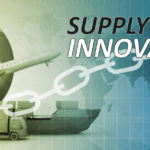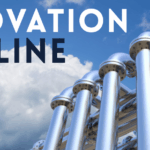The Essential Mindset for Moving from Static Plans to Dynamic Strategy
Innovate Your Strategy Process in Uncertain Times
Political and economic instability, such as the recent tariff increases under the second Trump Administration, has rendered traditional strategic planning less effective. In this volatile environment, the only certainty is uncertainty itself. Forward-thinking organizations are responding by reimagining both their strategies and the processes used to create them, embracing innovation management to stay ahead.
Why Innovation Management Matters for Strategic Agility
The most effective leaders focus on identifying which uncertainties truly matter and acting accordingly. Instead of relying solely on trend analysis and rigid forecasts, they ask:
What triggers would signal a shift toward one scenario over another?
This shift from static planning to dynamic scenario management is at the heart of innovation management. By preparing a flexible portfolio of resources and action plans, companies can quickly direct efforts toward the most promising opportunities as conditions change.
Scenario Planning: A Core Innovation Management Tool
Traditional approaches often commit to a single “most likely” path. In contrast, innovative organizations prepare for multiple outcomes by:
- Developing actionable plans for a range of scenarios
- Balancing commitment with flexibility in resource allocation
- Shortening decision cycles to gain a competitive edge
This proactive approach enables companies to seize opportunities as they arise, rather than reacting after the fact.
Building an Innovation Management Portfolio- Safe Bets, Hedges, and Bold Moves
A robust innovation management strategy includes three key elements:
Safe Bets (No-Regret Decisions)
These are foundational moves that create value in any scenario:
- Continuous cost management
- Operational improvements
- Investments in talent and digital infrastructure
Hedging Your Bets Strategic Optionality)
Prepared companies build flexibility by:
- Running pilot programs and small-scale experiments
- Entering new markets through joint ventures
- Investing in modular systems that can adapt as needs evolve
Bold Wagers (High-Impact Investments)
These are significant, long-term bets that could create major competitive advantages if the future unfolds as anticipated. Early planning enables companies to act quickly when the timing is right, turning speed into a strategic edge.
Case Study: GE’s Strategic Flexibility Through Innovation Management
General Electric (GE) exemplifies innovation management in action. Facing global uncertainty, GE adopted scenario planning to prepare for a range of outcomes rather than betting on a single forecast. Their $200 million investment in a “multimodal” manufacturing facility in Pune, India, showcases this approach.
The Multimodal Facility- Adaptive Manufacturing for Uncertain Markets
Designed with advanced technologies, the Pune plant can pivot production between sectors-jet engines, locomotives, wind turbines, or water treatment-based on shifting demand. This flexibility transforms a high-risk investment into a strategic “safe bet,” ensuring readiness regardless of how the market evolves.
Innovation Management in Action- Workforce and Technology Integration
GE’s onsite university trains employees to operate across multiple business lines, further enhancing the plant’s adaptability and resilience.
Strategic Agility is the Future of Innovation Management
GE’s approach demonstrates that large-scale investments need not be constrained by rigid assumptions. With the right insights and innovative designs, organizations can commit boldly while preserving future options. This mindset shift-from static planning to strategic agility is essential as global complexity and uncertainty continue to rise.
In summary, the future of innovation management hinges on cultivating strategic agility- a dynamic capability that empowers organizations to thrive amid uncertainty and disruption. Rather than relying on rigid, static plans, leading companies are embracing scenario planning to anticipate multiple possible futures, building portfolios of flexible options, and fostering a culture of continuous learning and rapid adaptation. By embedding the principles of resilience, foresight and experimentation into their core operations and leadership practices, organizations can unlock sustained innovation and outperform competitors, maintaining a decisive edge.
Let’s have a conversation about your organization’s Innovation Strategy.






